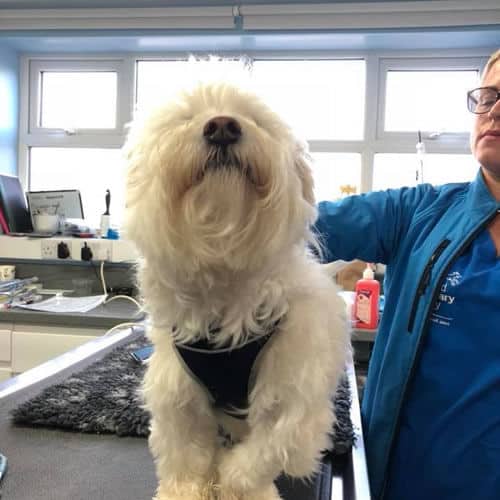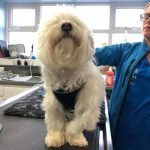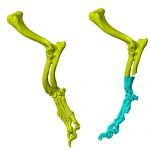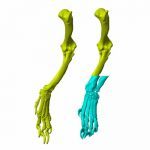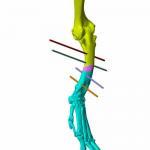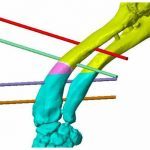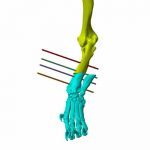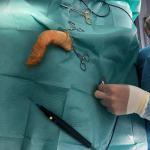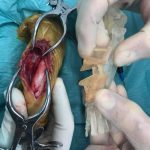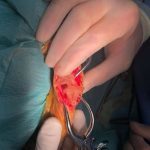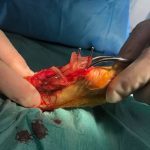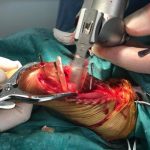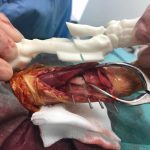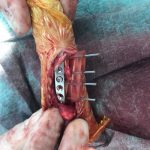A really exciting application for this technology is in the correction of angular limb deformities. Some animals’ bones don’t grow at the correct rate which can result in abnormal angulation of the limb. This causes abnormal forces to be placed across the joints at either end of the bent bone, and in some cases poor joint fit. Long term, patients with angular limb deformity can develop osteoarthritis and chronic soft tissue injuries which result in pain and dysfunction.
This video shows a 3D CT scan of both front legs of a patient with angular and rotational deformity of one of his front legs. The deformity has resulted in a mild poor fit of the elbow joint and severe rotational deformity of the paw and carpus. This dog walked with his foot pointing 90 degrees the wrong way – the so-called ‘flipper foot’.
He was only 12 months old and so the owner was keen to reduce the impact of this deformity on the limb long term.
The beauty of this scan is that the surgery to correct the deformed bones can be planned virtually. The joints can be realigned to give a straight leg, and the size, shape and precise location of the necessary bone cuts to effect that bone correction can be planned before any surgery is performed. This reduces surgical time, reduces surgical trauma and allows the surgeon to walk through and rehearse the procedure which improves the outcome and repeat ability of the correction.
- Picture 1: shows the degree of rotational deformity of the paw in the patient.
- Pictures 2 and 3: The first part of planning these surgeries is to align the joints in the ideal positions in all planes and to virtually cut the bones to make sure we are happy with limb alignment. Once we are happy, we can move on to the next step.
- Pictures 4 and 5: Show the size shape and location of the wedge of bone (pink segment) that must be removed to effect the angular and rotational correction we want. The coloured columns represent the directions of pins that will be placed in the bone segments to hold a cutting guide in place on the bone surface. This cutting guide fits perfectly to the surface contour of the bone so it can only be placed on the bone in one position.
- Picture 6: once the bone is cut and the leg straightened, the pins become aligned in one plane. This allows us to create a second reduction guide that we can place over the pins to hold the bones in the corrected position whilst a bone plate and screws is applied to provide strong internal fixation to allow the bone to heal.
- Picture 7: The patient is prepped and the limb is covered in a sterile adhesive iodine-impregnated drape to reduce the risk of infection.
- Picture 8: 3D modelling becomes reality. The bone model is used to help ensure we have exposed enough of the patient’s bone to allow us to place the cutting guide.
- Pictures 9 and 10: The cutting guide was initially held in place on the patient’s bone and then finally pinned in position.
- Picture 11: Cutting the bone using the cutting guide.
- Picture 12: The cut bone is straightened and then held in place by aligning the pins over the reduction guide. We check that the patient’s bone cut matches the 3D model of the corrected leg.
- Picture 13: The final fixation in place with a bone plate and screws. This will allow the bone to heal in its new position.
A big thank you to Gilding Orthopaedics for doing the surgery, we are delighted to be a part of this great step forward in imaging technology.


